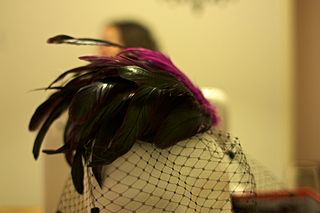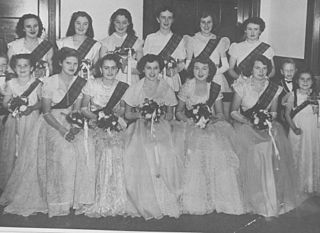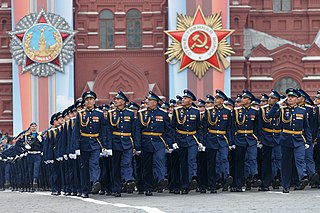 W
WFormal wear, formal attire or full dress is the traditional Western dress code category applicable for the most formal occasions, such as weddings, christenings, confirmations, funerals, Easter and Christmas traditions, in addition to certain state dinners, audiences, balls, and horse racing events. Formal wear is traditionally divided into formal day and evening wear; implying morning dress before 6 p.m., and white tie after 6 p.m. Generally permitted other alternatives, though, are the most formal versions of ceremonial dresses, full dress uniforms, religious clothing, national costumes, and most rarely frock coats. In addition, formal wear is often instructed to be worn with official full size orders and medals.
 W
WThe Chesterfield is a formal dark knee-length overcoat with a velvet collar introduced around the 1840s in the United Kingdom, with prominence attributed to its namesake George Stanhope, 6th Earl of Chesterfield, then a leader of British fashion.
 W
WA cloak is a type of loose garment that is worn over indoor clothing and serves the same purpose as an overcoat; it protects the wearer from the cold, rain or wind for example, or it may form part of a fashionable outfit or uniform. Cloaks have been used by myriad historic societies; many climates favor wearing a full-body garment which is easily removed and does not constrain the wearer with sleeves. Over time cloak designs have been changed to match fashion and available textiles.
 W
WA cocktail hat is a small, extravagant, and typically brimless hat for a woman. It is usually a component of evening wear and is intended as an alternative to a large-brimmed hat. These hats are often decorated with beads, jewels or feathers, as well as a veil or netting. Cocktail hats were most popular between the 1930s and 1960s.
 W
WA court shoe, or pump, is a shoe with a low-cut front, or vamp, with either a shoe buckle or a black bow as ostensible fastening. Deriving from the 17th and 18th century dress shoes with shoe buckles, the vamped pump shape emerged in the late 18th century. By the turn of the 19th century, shoe buckles were increasingly replaced by black bows, which has remained the contemporary style for men's formal wear, leather or patent leather evening pumps ever since. This latter style is sometimes also called an opera pump or opera slipper.
 W
WA debutante dress is a pure white ball gown, accompanied by long white gloves and pearls worn by girls or young women at their debutante cotillion. Debutante cotillions were traditional coming of age celebrations for eligible young ladies ready to be presented to society as ready for marriage.
 W
WIn clothing for men, a dickey is a type of shirt-front that is worn with black tie (tuxedo) and with white tie evening clothes. The dickey usually is attached to the shirt collar and then is tucked into the waistcoat or into the cummerbund. Some dickey designs have a trouser-button tab, meant to secure the dickey-bottom to the waistband of the trousers, and so prevent the dickey from becoming untucked.
 W
WDiplomatic uniforms are ornate uniforms worn by diplomats—ambassadorial and consular officers—at public occasions. Introduced by European states around 1800 and patterned on court dress, they were abandoned by most countries in the twentieth century, but diplomats from some countries retain them for rare, formal occasions.
 W
WFull dress uniform or parade dress uniform is the most formal type of uniforms used by military, police, fire and other public uniformed services for official parades, ceremonies, and receptions, including private ones such as marriages and funerals. Full dress uniforms typically include full-size orders and medals insignia. Styles tend to trace back to uniforms used during the 19th century, although the 20th century saw the adoption of mess dress-styled full-dress uniforms. Designs may depend on regiment or service branch. In Western dress codes, full dress uniform is a permitted supplementary alternative equivalent to the civilian white tie for evening wear or morning dress for day wear – sometimes collectively called full dress – although military uniforms are the same for day and evening wear. As such, full dress uniform is the most formal uniform, followed by the mess dress uniform.
 W
WA fascinator is a formal headpiece, a style of millinery. Since the 1990s the term has referred to a type of formal headwear worn as an alternative to the hat; it is usually a large decorative design attached to a band or clip. In contrast to a hat, its function is purely ornamental: it covers very little of the head, and offers little or no protection from the weather. An intermediate form, incorporating a more substantial base to resemble a hat, is sometimes called a hatinator.
 W
WThe Inverness cape is a form of weatherproof outer-coat. It is notable for being sleeveless, the arms emerging from armholes beneath a cape. It has become associated with the fictional detective Sherlock Holmes.
 W
WMorning dress, also known as formal day dress, is the formal Western dress code for day attire, consisting chiefly of, for men, a morning coat, waistcoat, and formal trousers, and an appropriate gown for women. Men may also wear a popular variant where all parts are the same colour and material, often grey and usually called "morning suit" or "morning grey" to distinguish it; considered properly appropriate only to festive functions such as summer weddings and horse races, which consequently makes it slightly less formal. The correct hat would be a formal top hat, or if on less spacious audience settings optionally a collapsible equivalent opera hat.
 W
WAn opera cloak is an ankle- or floor-length loose-fitting cloak of dark, luxurious fabric such as velvet, brocade or satin, to be worn over an evening gown for a woman or a man's white tie or black tie tuxedo, named after its typical designation for the opera. It may be described as a fitted cloak, generally not as tailored as a coat. For white tie, men's opera cloaks are frequently worn with a walking stick and top hat.
 W
WAn opera hat, also called a chapeau claque or gibus, is a top hat variant that is collapsible through a spring system, originally intended for less spacious venues, such as the theatre and opera house.
 W
WAn over-frock coat is a formal overcoat designed to be worn over a frock coat if needed in cold weather. A top-frock coat may also be worn over a frock coat in milder weather. Shaped like the body coats popular in the late Victorian and Edwardian periods, the over-frock coat was cut in essentially the same way as the frock coat that was worn under it, although it would be larger overall to accommodate the frock-coat worn underneath. Like the frock coat, the over-frock would typically be single-breasted, with step lapels for informal occasions like business, and double-breasted with pointed lapels for formal occasions - weddings, funerals, balls, etc. The formal variety was sometimes called a Prince Albert overcoat. A frock-overcoat, like a frock coat, almost never has pockets.
 W
WA picture hat or Gainsborough hat is an elaborate woman's hat with a wide brim. It has been suggested that the name may be derived from the way the broad brim frames the face to create a "picture".
 W
WA top hat is a tall, flat-crowned hat for men traditionally associated with formal wear in Western dress codes, meaning white tie, morning dress, or frock coat. Traditionally made of black silk or sometimes grey, the top hat emerged in Western fashion by the end of 18th century. Although it declined by the time of the counterculture of the 1960s, it remains a formal fashion accessory. A collapsible variant of a top hat, developed in the 19th century, is known as an opera hat.
 W
WFormal trousers, also known as formal striped trousers or colloquially spongebag trousers, are grey striped or patterned formal trousers for day attire in traditional Western dress code, primarily associated with formal morning dress or secondly its semi-formal equivalent black lounge suit. Traditionally made from heavy wool ranging from worsted, melton to partial twill weave, the pattern is most often of a muted design in stripes of black, silver, white and charcoal grey in various combinations. In addition, formal trousers may also come in check patterns, such as houndstooth check, or plaids, although these variants are widely considered as not the most formal.
 W
WThe Ulster is a Victorian working daytime overcoat, with a cape and sleeves.
 W
WWhite tie, also called full evening dress or a dress suit, is the most formal in traditional evening western dress codes. For men, it consists of a black tail coat worn over a white shirt, white piqué waistcoat and the eponymous white bow tie worn around a standing wing collar. Mid or high-waisted black trousers with galon, a trim one with two silk stripes that conceal the outer seams of the trousers, along with black highly polished or patent leather oxford or optionally court shoes, complete the outfit. Orders, decorations and medals may be worn. Acceptable accessories include a black top hat, white gloves, a white scarf, a pocket watch, a white pocket square, and a boutonnière. Women wear full-length ball or evening gowns with evening gloves and, optionally, tiaras, jewellery, and a small handbag. Some white-tie functions also request that the women wear long gloves past the elbow.